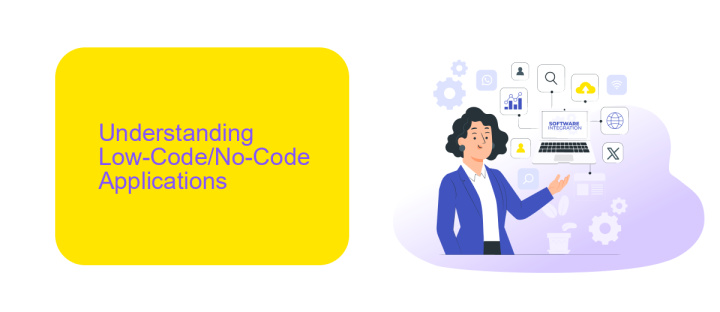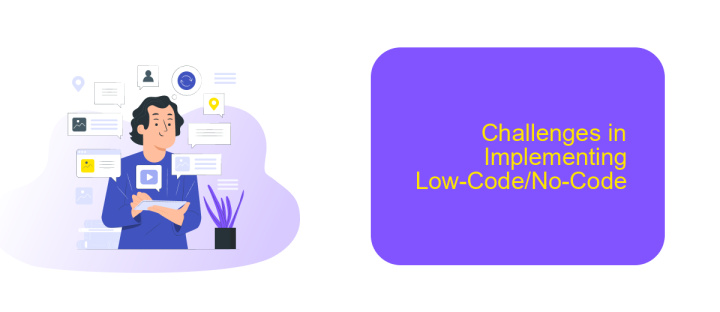Application Low-Code No-Code
The rise of Low-Code and No-Code platforms is revolutionizing the way businesses approach software development. By enabling users to create applications with minimal coding knowledge, these platforms democratize technology, empowering non-developers to build functional and sophisticated solutions. This article delves into the benefits, challenges, and future prospects of Low-Code and No-Code application development, highlighting its transformative impact on various industries.
Introduction
Low-code and no-code platforms are revolutionizing the way applications are developed, enabling users with minimal coding skills to create powerful software solutions. These platforms provide visual development environments that simplify the process of building, testing, and deploying applications, making technology more accessible to a broader audience.
- Visual development interfaces
- Drag-and-drop functionality
- Pre-built templates and components
- Automated testing and deployment
- Integration capabilities
One significant advantage of low-code and no-code platforms is their ability to integrate seamlessly with various services and applications. For instance, ApiX-Drive offers a robust solution for integrating multiple systems, allowing users to automate workflows without extensive programming knowledge. By leveraging these platforms, businesses can accelerate their digital transformation, reduce development costs, and enhance overall productivity.
Understanding Low-Code/No-Code Applications

Low-code and no-code applications are revolutionizing the way businesses develop software by enabling users to create applications with minimal or no programming knowledge. These platforms provide visual development tools and pre-built templates, allowing users to drag and drop components to design their applications. This approach significantly reduces development time and costs, making it accessible for non-technical users to bring their ideas to life. By simplifying the development process, businesses can quickly adapt to changing market needs and improve operational efficiency.
One of the key advantages of low-code/no-code platforms is their ability to easily integrate with other systems and services. For instance, ApiX-Drive is a powerful tool that facilitates seamless integration between various applications, enabling users to automate workflows without writing code. This capability is crucial for businesses looking to streamline operations and enhance productivity. By leveraging tools like ApiX-Drive, organizations can ensure that their low-code/no-code applications are not only easy to build but also highly functional and interconnected with their existing technology stack.
Benefits of Low-Code/No-Code

Low-Code/No-Code platforms offer numerous benefits that can significantly streamline the development process and empower a broader range of users to create applications. These platforms reduce the dependency on traditional coding skills, making it easier for non-developers to participate in application development.
- Speed: Rapid development and deployment of applications, reducing time-to-market.
- Cost-Effective: Lower development costs by minimizing the need for extensive coding expertise.
- Accessibility: Enables business users and non-developers to create applications, democratizing the development process.
- Flexibility: Easily customizable to meet specific business requirements without extensive coding.
- Integration: Simplifies the integration of various services and APIs, such as ApiX-Drive, to automate workflows and enhance functionality.
By leveraging Low-Code/No-Code platforms, organizations can accelerate innovation, reduce costs, and empower a more diverse group of users to contribute to the development process. This democratization of application development fosters a more agile and responsive business environment.
Challenges in Implementing Low-Code/No-Code

Implementing low-code/no-code solutions can present several challenges, despite their promise of simplifying application development. One of the primary issues is the limitation in customization. While these platforms offer a wide array of functionalities, they may not always meet the specific needs of every business, leading to potential restrictions in achieving desired outcomes.
Another significant challenge is integration with existing systems. Many businesses rely on a complex web of legacy systems and third-party applications. Ensuring seamless integration with these systems can be difficult and time-consuming, often requiring additional tools and expertise.
- Customization limitations
- Integration complexity
- Security concerns
- Scalability issues
To address integration challenges, services like ApiX-Drive can be invaluable. ApiX-Drive simplifies the process of connecting various applications and automating workflows, reducing the technical burden on businesses. However, organizations must weigh these benefits against the potential drawbacks to determine if low-code/no-code solutions are the right fit for their specific needs.


Future of Low-Code/No-Code
The future of low-code/no-code platforms looks promising as they continue to evolve and gain traction across various industries. These platforms are democratizing software development by enabling users with little to no coding experience to create complex applications. This shift is expected to drive innovation and efficiency, allowing businesses to respond more quickly to market demands and reduce dependency on traditional IT departments. As artificial intelligence and machine learning capabilities are integrated into these platforms, we can anticipate even more sophisticated and intuitive development environments.
Integration capabilities will be a key focus in the future of low-code/no-code platforms. Services like ApiX-Drive are paving the way by offering seamless integration solutions that connect various applications and automate workflows. This allows businesses to streamline operations and enhance productivity without extensive coding efforts. As the ecosystem of low-code/no-code tools expands, we will likely see a surge in specialized solutions tailored to specific industries, further accelerating digital transformation and opening new possibilities for innovation.
FAQ
What is Low-Code/No-Code development?
Who can benefit from using Low-Code/No-Code platforms?
Are Low-Code/No-Code platforms secure?
Can Low-Code/No-Code platforms integrate with other systems?
What types of applications can be built using Low-Code/No-Code platforms?
Time is the most valuable resource for business today. Almost half of it is wasted on routine tasks. Your employees are constantly forced to perform monotonous tasks that are difficult to classify as important and specialized. You can leave everything as it is by hiring additional employees, or you can automate most of the business processes using the ApiX-Drive online connector to get rid of unnecessary time and money expenses once and for all. The choice is yours!

